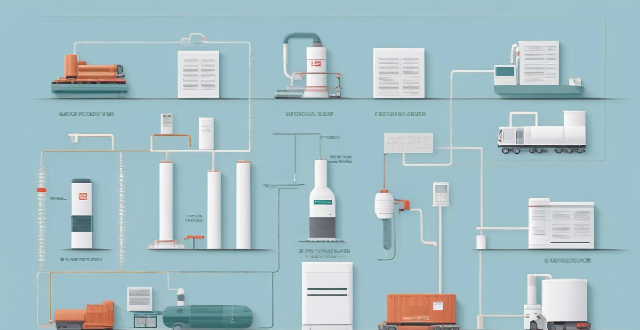The text discusses the crucial role of energy storage in modern energy systems, enabling the utilization of excess energy during low demand periods for peak demand. It presents a summary of various effective energy storage solutions, including pumped hydro storage, battery storage, compressed air energy storage (CAES), flywheels, flow batteries, superconducting magnetic energy storage (SMES), and thermal energy storage. Each solution has unique features and applications, such as high capacity for pumped hydro, fast response times for batteries and flywheels, and flexible design for flow batteries. The choice among these solutions depends on factors like application, cost, geography, and desired duration and scale of storage.

The Most Effective Energy Storage Solutions Currently Available
Energy storage is a crucial component of the modern energy system, enabling us to store excess energy generated during periods of low demand and use it during peak demand periods. Here are some of the most effective energy storage solutions currently available:
Pumped Hydro Storage
Pumped hydro storage involves pumping water from a lower elevation reservoir to a higher elevation reservoir when there is excess electricity supply. When electricity is needed, the water is released back down to the lower reservoir through turbines, generating electricity in the process. This method is one of the oldest and most widely used forms of energy storage, with a typical efficiency rate of around 70-80%.
Key Features:
- Mature technology with a long history of successful implementation.
- High capacity for storing large amounts of energy.
- Suitable for balancing loads over extended periods.
Battery Storage
Batteries, particularly lithium-ion batteries, have become increasingly popular for energy storage due to their high energy density, long lifespan, and rapid response time. They are commonly used in small-scale applications like electric vehicles and residential solar power systems but are also scaled up for grid support.
Key Features:
- High energy density allows for compact installations.
- Fast response times make them suitable for frequency regulation and load leveling.
- Increasingly cost-effective as technology advances.
Compressed Air Energy Storage (CAES)
In CAES, air is compressed and stored in underground caverns or above-ground containers during off-peak hours. When electricity demand rises, the compressed air is released, mixed with natural gas, and burned to generate electricity. While not as efficient as pumped hydro storage, it has no water requirements and can be built in diverse locations.
Key Features:
- Can be sited in diverse geographic locations without water constraints.
- Has a relatively long discharge duration, making it suitable for daily cycling.
- Can contribute to peak shaving and load leveling on the grid.
Flywheels
Flywheels store energy in a rotating mass. When excess electricity is available, it accelerates the flywheel's rotation; when power is needed, the rotation slows down, and a generator converts the kinetic energy back into electrical energy. Flywheels are particularly well-suited for short-term, high-power applications.
Key Features:
- Extremely fast response time, suitable for seconds to minutes-long energy needs.
- High cycle efficiency and durability.
- Useful for grid stability and as uninterruptible power supplies (UPS).
Flow Batteries
Flow batteries store energy in liquid electrolytes that are pumped past a membrane in a reactor. They can be designed for both high power output and high energy storage capacity by scaling the size of the storage tanks. This makes them flexible for a range of applications from small-scale to utility-scale energy storage.
Key Features:
- Decoupled power and energy capacities allow for flexible design.
- Long cycle life and low degradation rates.
- Can provide multi-hour to multi-day energy storage solutions.
Superconducting Magnetic Energy Storage (SMES)
SMES involves storing energy in superconducting magnetic fields that are maintained by direct current running through supercooled coils. It offers extremely high charge and discharge efficiencies and very fast response times, making it ideal for providing grid stability services. However, the high cost of materials and cooling requirements has limited its widespread adoption.
Key Features:
- High efficiency and rapid response suitable for instantaneous power quality correction.
- Can handle an unlimited number of charge and discharge cycles with minimal loss.
- Technology is still largely experimental and costly.
Thermal Energy Storage
Thermal energy storage systems capture excess heat and store it for later use, either as sensible heat (change in temperature) or latent heat (phase change). These systems can be used in conjunction with solar thermal power plants or industrial processes where waste heat is abundant.
Key Features:
- Can decouple energy collection from its usage, improving overall system efficiency.
- Wide variety of storage mediums and methods available.
- Particularly useful for renewable energy sources like solar thermal power.
Each of these energy storage solutions has its own strengths and weaknesses, and the choice among them depends on the specific application, cost considerations, geographical factors, and the desired duration and scale of energy storage. As technology continues to evolve, new storage solutions may emerge, further enhancing our ability to balance energy supply and demand efficiently.